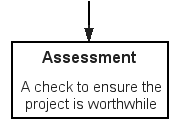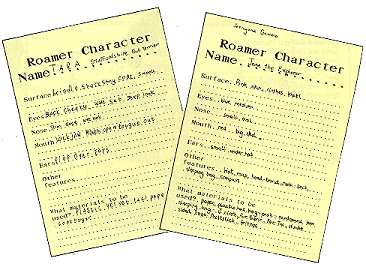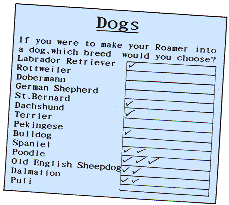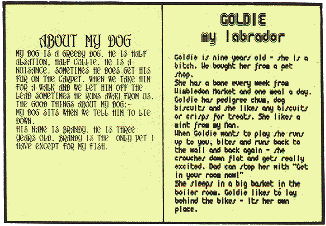
|
Feedback Form
| Introduction | Design | Ideas | Design & Control |
Project Suggestions |
| Design Process | Design Brief | Evaluation | The Design | Design Review |
The Design Brief
All designs start with the identification of a 'need'. A Design Brief, that is, a statement clarifying what a design must and must not do in order to satisfy the need, is then developed.
The Brief should define the problem and not anticipate a solution. It states the design objectives against which Evaluation and Design Review can be performed.
 |
||
|
 |
|
The Brief may be suggested by the child or the teacher and can be a simple statement like "Make a monster". It may include design constraints such as "Make a monster using the Face Shapes". Such oral briefs can be quite detailed:
 |
|
| Teacher-designed Help Sheets can be used to provide hints for the young designer | |
 |
|
| Written Design Briefs help the children to clarify their ideas and will be useful at other stages of the Design Process. | More sophisticated Briefs can include the use of the Roamer Control features and make statements on ideas about style. |
Assessment
Before committing itself to the expense of the Design stage, a commercial organisation would judge a project's viability. This assessment would include technical, market and financial feasibility studies.
In the classroom the assessment is based on educational value and practicality. Is the project possible with the available time and resources? Is it a sufficient test of the child's ability? Does it meet the curriculum needs? Is there a safety problem?
 Information
and Research
Information
and Research
Commercial organisations constantly increase their existing knowledge through research. It is from known-information that a 'need' is identified. However, the need may not be understood sufficiently to permit an adequate Design Brief to be written, or an Assessment to be made. Further research may be required. Since education is about 'knowledge-gathering', identifying 'design- needs' helps to foster a dynamic learning environment.
 |
One group of 8-year-olds surveyed their friends to decide what type of dog they should make. Developing a Design Brief using 'Market Research' is important in commercial design. |
| Designers create the Brief from existing knowledge and research. Southmead School's dog project provided the basis of the Brief, which included statements on environment and behaviour. |
| Back to top |
|---|